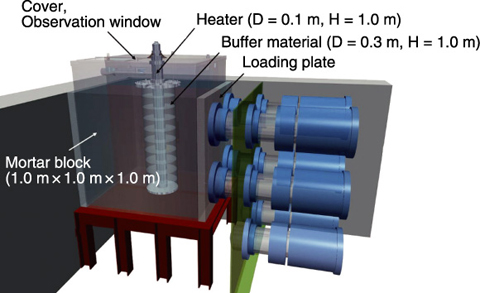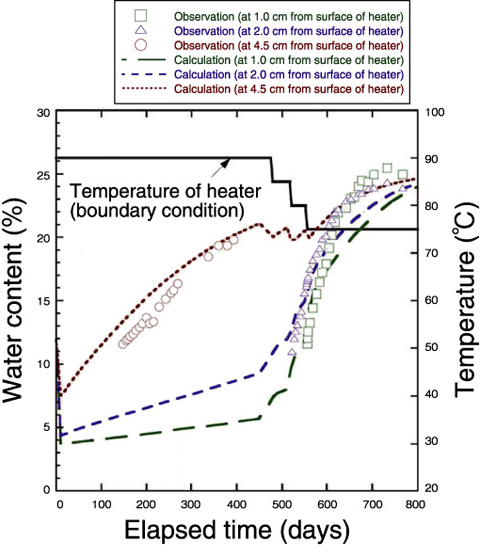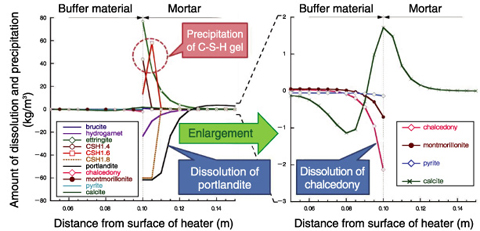
Fig.2-4 Schematic view of the engineered barrier experiment

Fig.2-5 Comparison of calculated and measured water content of the buffer material at the depths indicated as a function of elapsed time

Fig.2-6 Results of mineral dissolution and precipitation in the test specimen
It is anticipated that thermal - hydraulic - mechanical - chemical (THMC) processes will be coupled in the bentonite buffer material of a repository built for the geological disposal of high-level radioactive waste. The main contributors to these processes are (i) radiogenic heating from the decay of vitrified waste, (ii) infiltration of groundwater from the host rock, (iii) high pH leachate from the cementitious components of the repository, and (iv) the consequent chemical reactions and increase in swelling pressure. Numerical simulations are necessary to evaluate these coupled processes because of the large spatial and temporal scales involved. In order to evaluate these coupled processes, we conducted large scale experiments (Fig.2-4) to assist in the development of a coupled THMC analysis model.
The geochemical processes affecting the dissolution of primary minerals and precipitation of secondary minerals were the main focus of the TMHC model development. In order to confirm the coupled analysis model, we carried out an engineered barrier experiment (Fig.2-4), and compared the results of the experiment to the results of the coupled analysis.
Comparison between the experimentally measured and numerically simulated water content shows that they agree well (Fig.2-5). The THMC model in development predicted precipitation of a calcium silicate hydrate gel as a secondary mineral because the solution was saturated with respect to portlandite (Ca(OH)2) and chalcedony (SiO2) (Fig.2-6), thereby providing some confidence in the chemical features of the developing THMC model.